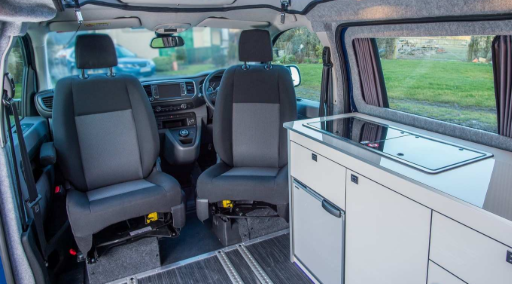2020 Volkswagen Van Interior Exterior And Engine
2020 Volkswagen Van Interior Exterior And Engine - Besides the Type 1 Beetle, the Type 2 Bus is Volkswagen's unquestionable most widely recognized vehicle. Some may express it's one of the most recognizable vehicles of interminability. Much credit can be offered to the Type 2's social effects all through the 1960s and 1970s in American mainstream culture on account of the flower child movement. Anyway remorsefully, Volkswagen has in reality left the Bus and its ageless styling to the pages of history.
Shockingly enough, the last Type 2 Bus, generally alluded to as the T2 Kombi, moved off the mechanical production system on December 31, 2013, in Sao Paulo. The Brazil-just model passed away on account of security enactment commanding ABS and twofold front air sacks change Volkswagen dithered to make on a 63-year-old model. Different forms of the Bus existed, normally, modifying names with every age. The Type 2 Bus, or Microbus, Transporter, Kombi, or camper, contingent on whom you ask, changed into the Type 3, Type 4, and Type 5 in different pieces of the world. Starting in 2015, Volkswagen has been building the Type 6, called the Transporter, in Germany. By the by, this van is present-day in each feeling of the word, with no indications meaning its celebrated past. Or maybe, it's essentially a forgettable van created to move voyagers or cargo that blends into the moving European wide open. American vehicle makers, then again, are feverish structure advanced autos with retro clues, recalling wonder long stretches of minutes for all time past. That asks the worry: imagine a scenario where Volkswagen did the exceptionally same. Consider the possibility that Volkswagen built up a special variety of its Transporter that returned 1969 when shirts were creatively colored, hair was long, love was complimentary, the war was terrible, and Woodstock was the area to be.
2020 Volkswagen Van Redesign
Exterior
Surely, our creation depends on Volkswagen's ID Buzz Concept from the 2017 Detroit Auto Show. What the thought did not have in usefulness for creation, we've notwithstanding. That comprises of useful headlights, a progressively sensible front guard, genuine haggles, increasingly reasonable windows, 4 authentic entryways, and an essential feeling of much better convenience for creation. The Bus includes a smooth two-tone paint plan that reenacts the underlying Type 2.
The grille-less front uses a solid foundation for the chrome VW logo structure and blue-tinted LED headlights. Mist lights down low guide supplement the headlights in a negative climate, as well. 2020 Volkswagen Van, The Bus sidesteps the current front-motor, front-drive structure of the T6 for the conventional back motor, back drive plan. Even though this reduces the absolute length of the front end, it produces a flexibility city-inhabitant. Volkswagen would have its work disposed of to breeze through accident tests, anyway, literally, nothing is troublesome. Outback, the back highlights a solid D-column, much like the underlying Type 2. This similarly offers space for the powertrain spared under the movement gear compartment behind the back seats.
Interior
While we didn't assume concerning render the inside, we're envisioning something significantly more helpful than the ID Concept's straightforward and advanced cockpit. A conventional wheel would be incredible, at least. 2020 Volkswagen Van, Different components of the ID Buzz's inside might make generation, for example, the extended control board with emphasizing shading and the little rack down underneath. Moreover conceivable is the high focus comfort, however, it would probably a connection to the dash in a generation model. Much the same as the ID Buzz, a piece of it may move rearward to serve the second-push visitors. Collapsible tables aren't out of the worry; just investigate vans of the past.
Another element we had love to see make the move are the turning front holder seats. This allows the front inhabitants to manage forward or turned rearward for associating with back voyagers. All things considered, save for the driver when in progress.
Engine
The ID Buzz Concept was an electric vehicle with a major, 111-kWh battery pack controlling 2 engines introduced at each finish of the van. This arrangement was approximated to deliver a better than average 369 pull and give a traveling assortment of 270 miles on one charge. 2020 Volkswagen Van Present-day EV buyers must find that suitable, anyway for pervasive intrigue, Volkswagen would be brilliant to comprise of a range-broadening generator. Like the BMW i3 and i8, the locally available range extender is a little fuel motor not quite the same as the driveline that comes online to charge the battery pack. It would offer the Bus and a lot higher range, well past the 270 miles of all-electric driving. Furthermore, with an ample wellspring of fuel offered, the trip is completely conceivable. A little three-chamber motor introduced under the back cargo area would supply all the power required to charge the batteries.
Price
It's hard to state what Volkswagen would charge for such a vehicle. The Bus couldn't be showcased as a top of the line or proficiency vehicle, so spending inviting costs would be required. 2020 Volkswagen Van Its value increases on account of its electrical drivetrain and range-extender, all things considered. On the off chance that Volkswagen started estimating at $35,000 for a variety without the range-extender, the Bus may do rather well, especially offered its notable legacy. Range-expanding models would direction a premium, conceivably picking $40,000 as a starting expense.






Post a Comment